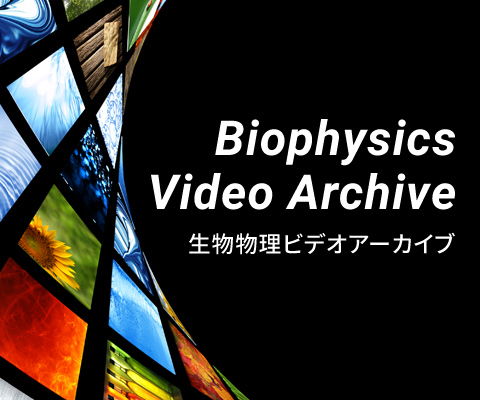男女共同参画学協会連絡会
支援企業による広告記事
- ソーラボジャパン株式会社
- CAD を使って光学装置を設計してみよう
- 「生物物理」2025年10月号
- ソーラボジャパン株式会社
- 次世代2光子顕微鏡―小型化がもたらす新たな可能性
- 「生物物理」2024年10月号
- ソーラボジャパン株式会社
- サイエンティフィックカメラと周辺機器の同期
- 「生物物理」2023年10月号
- ソーラボジャパン株式会社
- 顕微鏡のリノベーション ~ 顕微鏡ポートを活用した光学系の導入
- 「生物物理」2022年12月号
Biophysics and Physicobiology Editors' Choice Award
日本生物物理学会では、前年にBiophysics and Physicobiology誌に掲載された論文(依頼論文は原則対象外)の中から、編集委員会による選考を経て、生物物理学に寄与するユニークな論文に対して、「Biophysics and Physicobiology Editors' Choice Award」を授与します。
Biophysics and Physicobiology Editors' Choice Award選考規定
第12回Biophysics and Physicobiology Editors' Choice Award受賞論文(2025)
“Pioneering artificial cell-like structures with DNA nanotechnologybased liquid-liquid phase separation”
Yusuke Sato, Masahiro Takinoue
Biophysics and Physicobiology, Vol. 21, e210010 (2024)
【授賞理由】Editor-in-Charge : Yuki Sudo
This review article focuses on the development of research in DNA nanotechnologybased LLPS (Liquid-Liquid Phase Separation) and its application in constructing and utilizing artificial cell-like structures based on the author's achievements. From what I gathered in this article, the research on the engineering design and utilization of DNA droplets is significant and novel, grounded in physics, and has garnered a large following worldwide. Therefore, the publication of this review by BPPB journal is of great significance, contributing to the field of biophysics and expected to be widely cited.
“Charge block-driven liquid-liquid phase separation: A mechanism of how phosphorylation regulates phase behavior of disordered proteins”
Hisashi Shimamura, Hiroya Yamazaki, Shige H. Yoshimura
Biophysics and Physicobiology, Vol. 21, e210012 (2024)
【授賞理由】Editor-in-Charge: Munehito Arai
This review summarizes the mechanisms by which phosphorylation in intrinsically disordered proteins (IDPs) modulates protein function by altering the behavior of liquid-liquid phase separation (LLPS). In particular, phosphorylation in the intrinsically disordered regions of Ki-67 and NPM1 promotes or inhibits LLPS by altering the "charge blockiness" along the polypeptide chain. Regulation of LLPS via phosphorylation by enhancing or suppressing charge blockiness, rather than by modulating stereospecific interactions, may represent a general mechanism of protein regulation by post-translational modifications. Thus, this review provides an excellent overview of the mechanisms of protein function regulation by LLPS.
“Chemical tongues as multipurpose bioanalytical tools for the characterization of complex biological samples”
Shunsuke Tomita, Hiroka Sugai
Biophysics and Physicobiology, Vol. 21, e210017 (2024)
【授賞理由】Editor-in-Charge: Miho Katsuki
This article effectively represents the concept of the technique using beautifully designed illustrations. Additionally, the graphic of the human tongue is closely related to everyday life, making it eye-catching for people of all generations and non-scientists. Chemical tongues are bioanalytical tools that mimic human taste to analyze complex biological samples. This review provides a comprehensive overview of their principles, probe design, and applications, including their relationship to similar systems and the broader vision for the future of chemical tongue technology. It also effectively illustrates the concept with beautifully designed visuals, which might be eye-catching for people of all ages, including non-scientists.
“Four-color single-molecule imaging system for tracking GPCR dynamics with fluorescent HiBiT peptide”
Toshiki Yoda, Yasushi Sako, Asuka Inoue, Masataka Yanagawa
Biophysics and Physicobiology, Vol. 21, e210020 (2024)
【授賞理由】Editor-in-Charge: Hiroko Bannai
In this paper, the authors report a new method enabling single-fluorophore tracking (SFT), making use of the high affinity of the LgBiT (part of the luminescent enzyme NanoLuc) and HiBiT peptide, which is generally used for luminescent imaging. They have achieved four-color simultaneous SFT at a few nanometer resolutions by fusing a fluorescent dye with a high signal-to-noise ratio to the HiBiT peptide. The advantages of this research are that it can reduce the size of tags compared to conventional methods and can be used in combination with luminescence imaging analysis, allowing the tracking of various biological phenomena over a wide range of spatio-temporal scales. In addition, simultaneous tracking in four colors of the same molecule enabled by this method opens up new possibilities for analyzing multimer formation, which was previously difficult to do with a single color. Furthermore, the optical system for multicolor SFT described here is of great significance to the biophysics community. Therefore, I recommend this research for the Editor's Choice Award of BPPB.
“Inducing aggresome and stable tau aggregation in Neuro2a cells with an optogenetic tool”
Shigeo Sakuragi, Tomoya Uchida, Naoki Kato, Boxiao Zhao, Toshiki Takahashi,Akito Hattori, Yoshihiro Sakata, Yoshiyuki Soeda, Akihiko Takashima, Hideaki Yoshimura, Gen Matsumoto, Hiroko Bannai
Biophysics and Physicobiology, Vol. 21, e210023 (2024)
【授賞理由】Editor-in-Charge: Keiichi Inoue
The development of OptoTau offers a novel methodology for investigating the causal mechanisms of tauopathies, including Alzheimer’s disease. Additionally, its molecular design concept is highly innovative and has the potential to guide future studies. Given these strengths, this paper is expected to attract readers' interest and can be recommend for the Editor’s Choice award.
“Rapid in vitro method to assemble and transfer DNA fragments into the JCVI-syn3B minimal synthetic bacterial genome through Cre/loxP system”
Atsuko Uenoyama, Hana Kiyama, Mone Mimura, Makoto Miyata
Biophysics and Physicobiology, Vol. 21, e210024 (2024)
【授賞理由】Editor-in-Charge: Hironari Kamikubo
This paper proposes a novel method for introducing exogenous genes into the Syn3B genome using the Cre-loxP system. Not only does this technique enable rapid genome manipulation, but it also has the potential to become a versatile approach applicable to other species beyond the Syn3B strain presented in the paper. For these reasons, I believe this paper is highly deserving of recommendation for the BPPB Editor’s Choice Award.
“Strength in numbers: Unleashing the potential of trans-scale scope AMATERAS for massive cell quantification”
Taro Ichimura, Taishi Kakizuka, Yuki Sato, Yoichiro Fujioka, Yusuke Ohba, Kazuki Horikawa, Takeharu Nagai
Biophysics and Physicobiology, Vol. 21, e211017 (2024)
【授賞理由】Editor-in-Charge: Hiroko Bannai
The authors have developed a trans-scale optical imaging system (trans-scale scope) that can capture both macroscopic changes in the entire system (cm scale) and the microscopic behavior of individual cells (µm scale). This review introduces the design concept, optical configuration, and observation examples of the two trans-scale scopes named AMATERAS-1 and -2. This imaging system was developed from the unique ideas of biophysics, contributing to solving the questions held by the biophysics community. For this reason, I recommend this review for the BPPB Editor's Choice Award.
2025年4月
Biophysics and Physicobiology編集委員会





